All this talk of getting old


At the time of writing, it is summer, and as per usual the days are not living up to my expectations. I’m doing everything right, waking up at the right time, consuming grain- and protein-heavy breakfasts, even adding a workout session. I should have slept enough by now, my bills are paid, I have food in the fridge, I have no pain anywhere in my body. There should be plenty of room for happiness and satisfaction.
Alas, life is not as it should have been. The summer days feel as an apartment being announced for sale with “great potential”. This is not what I envisioned. My visualisation of how fantastic everything was going to be is bigger and more colourful than what the day presents me with. Wasn’t the sun supposed to shine a little bit brighter?
Because – this is the summer day where I was going to be on an island in the Oslo Fjord, barbecuing in the sun, grinning hysterically, and preparing something from the sea, with plenty of greens, accompanied by an orange or natural wine. All this whilst my phone’s camera lens captures the moment for social media. The pain in between the smiles, the visible signs of ageing on the (surprising multitude of) athletic bodies, the loneliness in between the social gatherings, the meals eaten alone, are nowhere to be found on Instagram or Snapchat. The insecurity one can feel in social happenings cannot be captured through the lens of a phone camera. That sort of thing can only be painted.
Therefore, it is great to see Audun Alvestad’s new paintings. Here there is plenty of darkness and loneliness for the both of us. The works are mostly painted with warm blues, colours that Norwegian art rarely has seen being used on this side of the millennium. Compositions of coloristic blues creating confined spaces of the sort one normally avoids. His characters seemingly wishing themselves anywhere else than the setting portrayed on the canvas.
The human figures are seen in social settings, doing physical activity, and in the first steps towards relational activities. It stops, however, at the first step. Because the people in Alvestad’s world do not communicate. They raise a hand, open a mouth, and glance towards or past one another. There is a peculiar stiffness in their bodies, they simply do not interact. It seems as though they are merely placed by accident in the same room, like actors on a stage waiting for lines and directions. They are appointed at a table, but do not know why. Here, no one bikes together, but each on their own, with a great distance. Where they only se each other’s back, when someone races past them, captured by the bike lane, leading nowhere.
There is a basic fail in communication between the people in the paintings, a loneliness and resignation, that is sorely relatable. Here are social dysfunction and lost expectations.
Those of you who know of Alvestad’s previous body of work, might be surprised seeing these new works. Because - didn’t Alvestad relatively recently paint happier images of men in water slides, in outside swimming pools and other easy-lived settings surrounded by palm trees?
The answer is yes, but no. Rightly, these previous works pointed to a tradition of sensitive and ecstatic works picturing masculine public baths. Edvard Munch and his contemporaries’ Vitalism. Pop Art’s love for swimming pools (particularly in the works of David Hockney). A whole tradition of faded 70s (and onwards) photographs of young people sitting on the edge of a pool (from Tom Bianchi to Wolfgang Tillmanns). Carsten Höller’s water slides and saltwater pools can also be referred to when talking about Alvestad’s previous works. Referencing the joy of life and rebellion.
However, let’s take a closer look at these apparent happy-summer-images that Alvestad previously presented us with. Here there were also shades of blue, people standing in their lonesome, either alone or with other people in the canvas. Also, in these settings it seemed as though the characters were painted in tight compositions, surprised to find themselves there, in the setting. Demonstrating everything but expressive joy. More liken to the fear of feeling wrong, being wrong, not coping with what’s presented.
When the previous paintings came about a couple of years ago, one could easily interpret them as dreams of escapism in a time coined by the pandemic and isolation. A time when we were all awkwardly locked inside with our separate dreams. When we all were bathing alone. In retrospect I might as well read these works from that time, those with swimming pools, water slides and palm trees as a kind of documentation over the reuniting with life, with anticipations that life cannot redeem.
There wasn’t much escapism in the works, rather resignation. Loneliness and social parallel lanes of lived lives. So, these sides to Alvestad’s oeuvre are in fact not new. We can actually find these tendencies even earlier in his body of work. In the earlier production of Alvestad, his paintings were filled with shades of pastel hues, and something liken to same-sex couples living their lives in Berlin, or some other equally hip location. Parties and colourful weekdays. Cosy rooms with objects, beds, and well-furnished kitchens. But even in those motifs there were problems of connection. People were seemingly like strangers. Even when they were laying naked, in an intimate setting, there was a struggle to connect. They were living in a pastel-coloured reality, but nevertheless alone.
The loneliness, the social struggles, the feeling of being all alone with one’s problems, all of this has effectively been there all along in Alvestad’s artworks. What’s new is that the walls are – increasingly - closing in. There aren’t many traces of pastel-coloured promises for the future or hopes for a life lived by the pool side. We are left with the occasional palm tree and intermittent strokes of pastel. There are equally fewer cosy objects to be seen and the rooms seem more and more like scenery. The colours have similarly become more blue and darker, the compositions tighten, with a widened use of dark colour fields. Something has happened, I think it lies just as much in the zeitgeist as it does within Alvestad. He has simply moved the loneliness into a new time. A different time than the previous works.
Alvestad and I are almost the same age. We were teenagers through the 90s, a time filled with promise and play, fun meta-perspectives, and nihilism. We became independent through the first decade of the 2000s, with its enormous cultural growth through the breakthrough of the internet, where we, based on interests and references, effortlessly could create a unique sense of self. We made it through the next decade, characterized by social media and a growing polarisation, by escaping to rooms that were made for us. Like Berlin. Then the pandemic hit us all. Indeed, we were saved though the keeping of a dream of another life, a life of revelling and escapism with other people. A better life on the other side of the pandemic.
The other side is now. With Putin on the war path, geriatric president candidates in the US, a world increasingly warmer every year and more and more illiberal democracies and authoritarian dictators in countries relatively close in proximity. Simultaneously we are being numbed by social media, which now seamlessly are baked into the media landscape, daily stories about who we should have been, what we should have accomplished, places we should have visited, chores we should have carried out. The masses are showing us the happiness that could have been ours. If only we had done things right. Thank God I can turn to Alvestad’s paintings as correction!
-Bjørn Hatterud
The text is originally written in Norwegian.
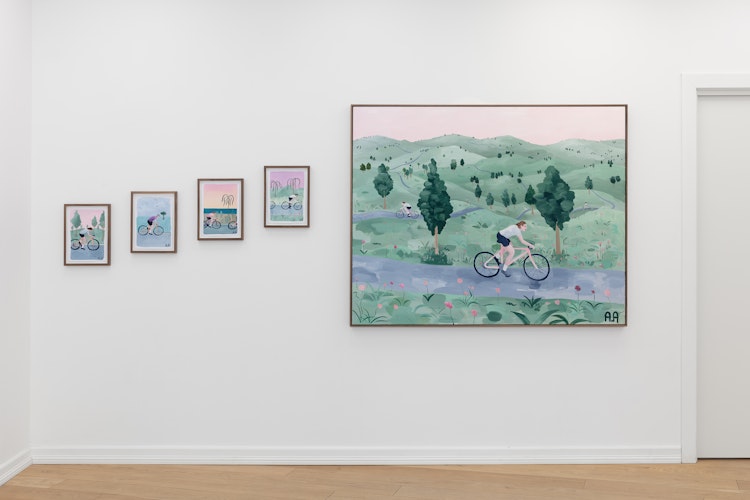
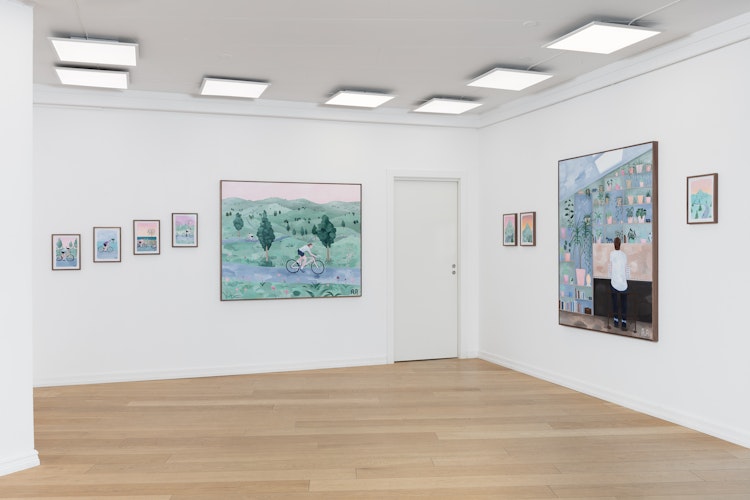


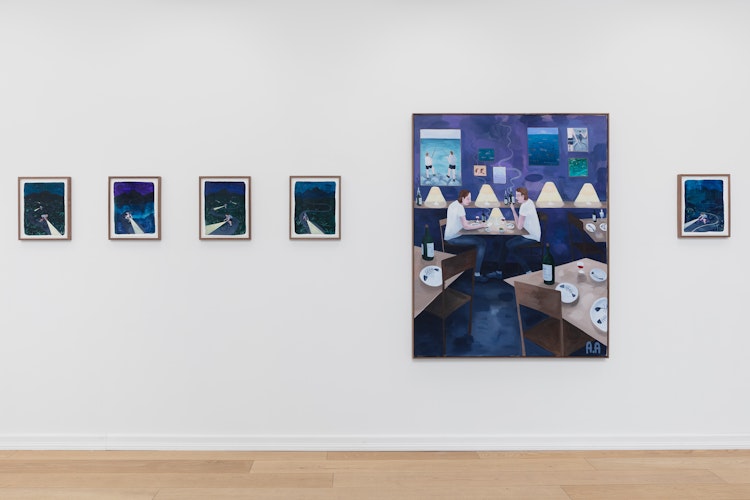
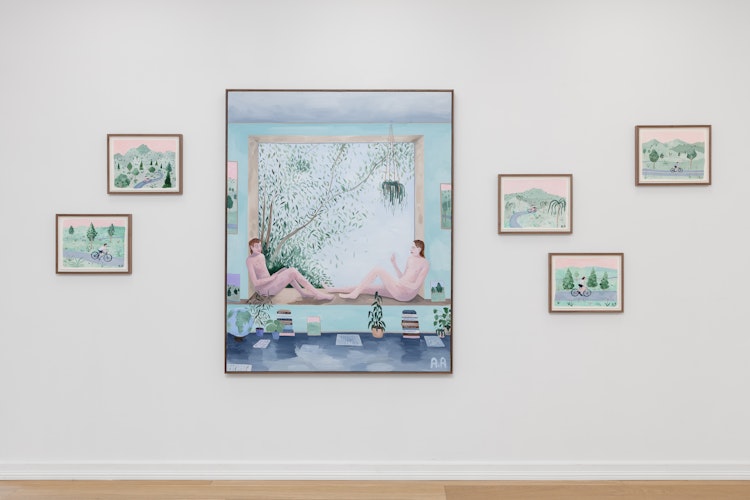







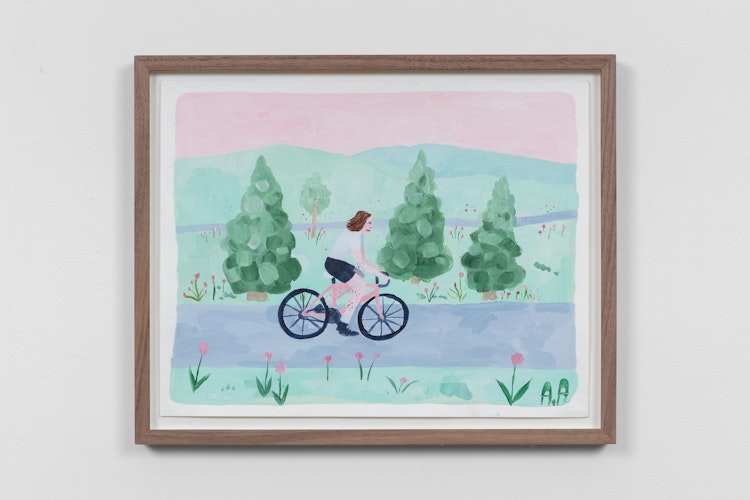







What are you looking for?